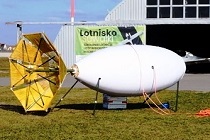 The media spread the news about the search for critical raw materials in the Suwałki region. However, this is not a reliable information. Yes, the Polish Geological Institute - National Research Institute (PGI-NRI) is conducting research in this area (Krzemianki and Udryń area - Suwałki anorthosite massif), but these are not exploration studies, because the deposits of iron, vanadium and titanium occurring in this area are already well recognized with an exceptionally large number of drillings.
The media spread the news about the search for critical raw materials in the Suwałki region. However, this is not a reliable information. Yes, the Polish Geological Institute - National Research Institute (PGI-NRI) is conducting research in this area (Krzemianki and Udryń area - Suwałki anorthosite massif), but these are not exploration studies, because the deposits of iron, vanadium and titanium occurring in this area are already well recognized with an exceptionally large number of drillings.
Geophysical research carried out recently in this area using a helicopter is intended to provide more detailed geological exploration and, very importantly, to test the new methodology.
At the beginning of March 2024, residents in the Krzemianka and Udryń areas could see a helicopter flying overhead with a large American football-shaped object suspended from it. This is a passive magnetic field meter. Using it, FTGM (full tensor of magnetic gradient) magnetic measurements were carried out over well drilled accumulations of iron and other associated metals. This method works well over shallow metal occurrences.
Research carried out in the Suwałki region, within the framework of the SEMACRET project, will allow to answer the question whether this method will work equally well over geological structures containing concentrations of metals, covered by more than 800 metres of sedimentary rock overburden. The measurements are carried out by the project partner Supracon from Germany, in cooperation with the Polish helicopter operator and in close scientific cooperation with PGI-NRI specialists.
The measurements will result in maps of the individual components of the Earth's magnetic field strength vector.
The research took place within the framework of the SEMACRET project (Sustainable exploration for orthomagmatic (critical) raw materials in the EU: Charting the road to the green energy transition" - Sustainable exploration of critical raw material deposits from magmatic rocks in the EU: Determining the method of transition to green energy).
It covers five European areas:
- Akanvaara in northern Finland,
- Beja in Portugal,
- Ransko in the Czech Republic,
- Suwałki region (Suwałki Anorthosite Massif) in Poland,
- Strzegomiany-Kunów zone (Ślęża Ophiolite) in Poland.
The main objective of the project is to develop exploration methodologies and explore the possibility of documenting new deposits of critical (or essential for energy conversion) raw materials in the European Union.
A detailed geological study of European magmatic systems containing accumulations of elements such as nickel, copper, chromium, titanium, vanadium and platinum group metals is planned. The final interpretation of the acquired survey material, combined with archival information, is expected to lead to the development of three-dimensional models of the spread of mineralisation in the already identified accumulations.
Text: dr inż. Olga Rosowiecka, Artur Baranowski














 PGI-NRI offer
PGI-NRI offer Mineral resources of Poland
Mineral resources of Poland  Oil and Gas in Poland
Oil and Gas in Poland 




 Subscribe to RSS Feed
Subscribe to RSS Feed